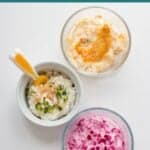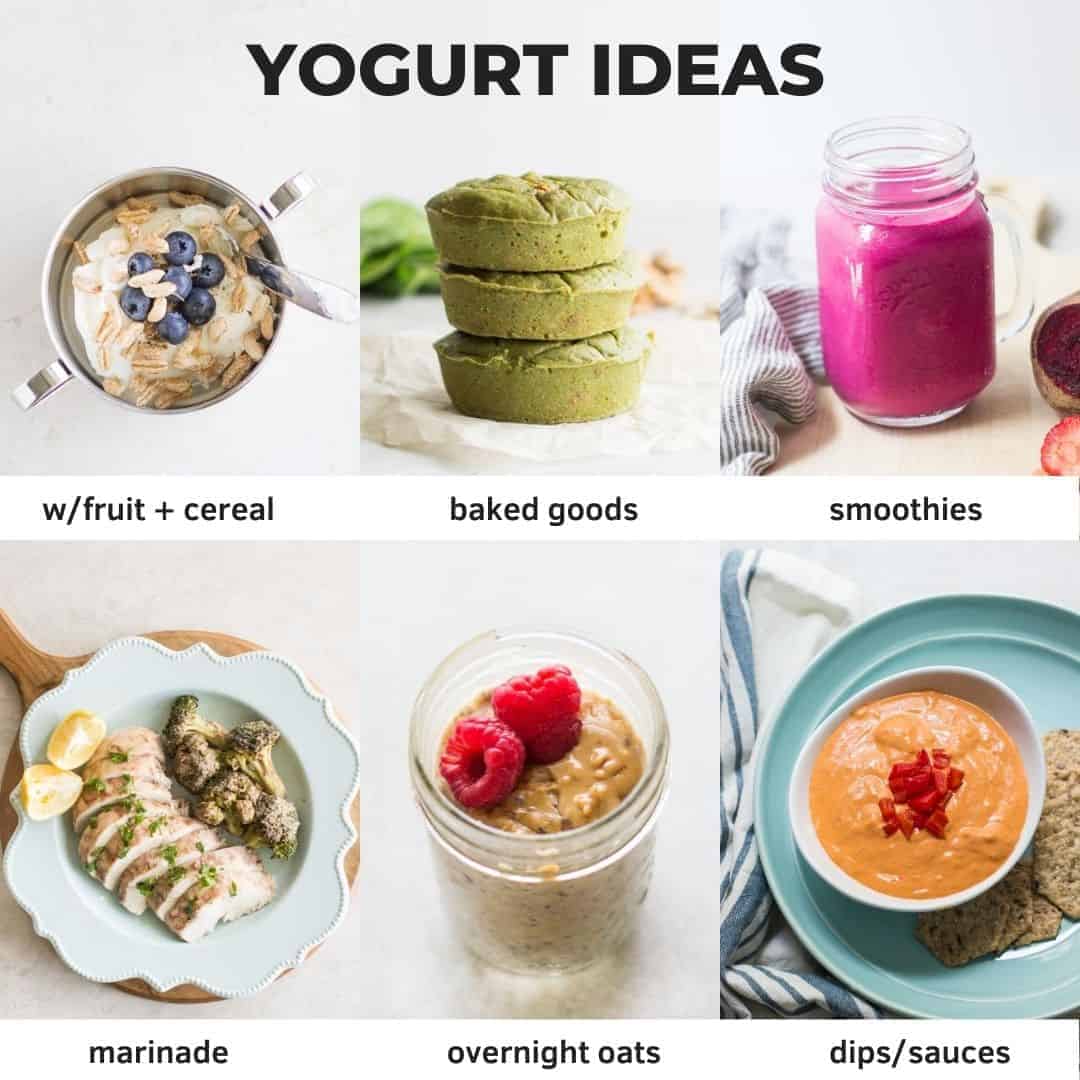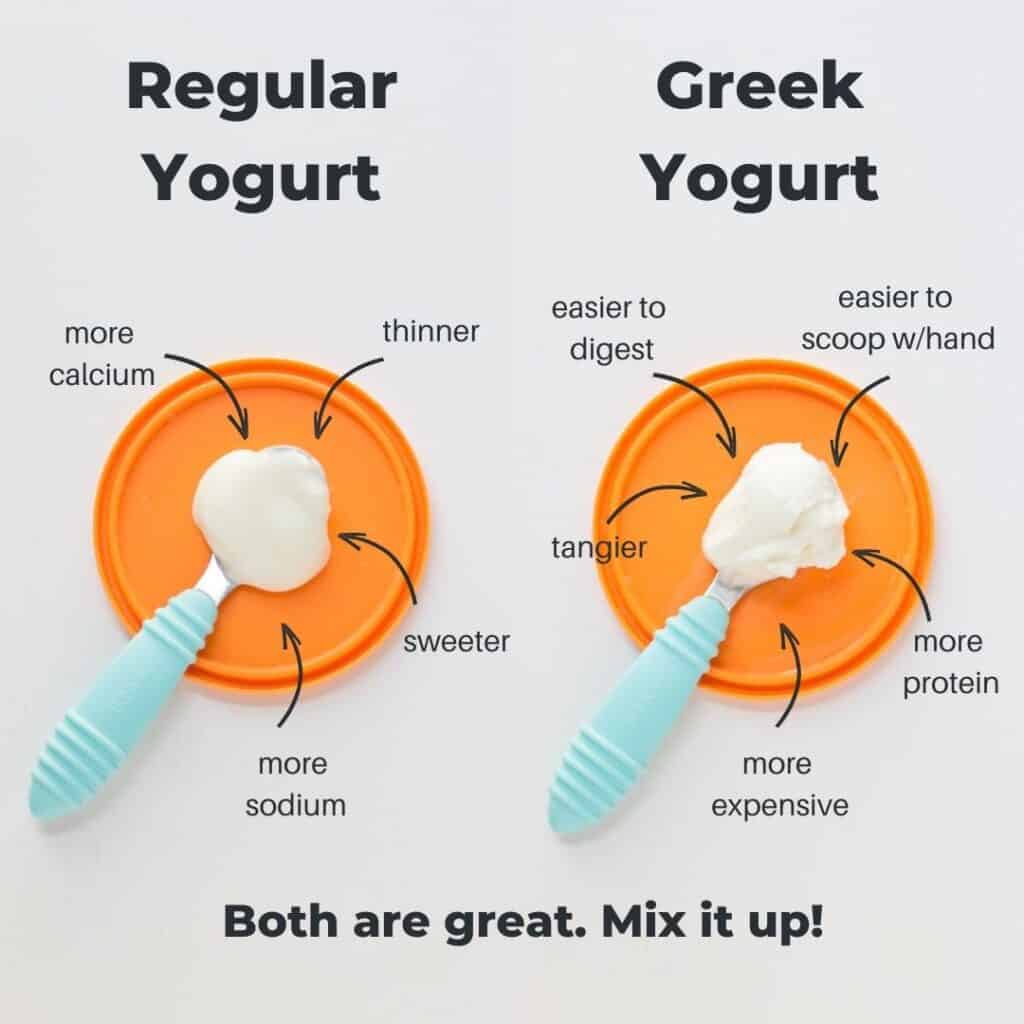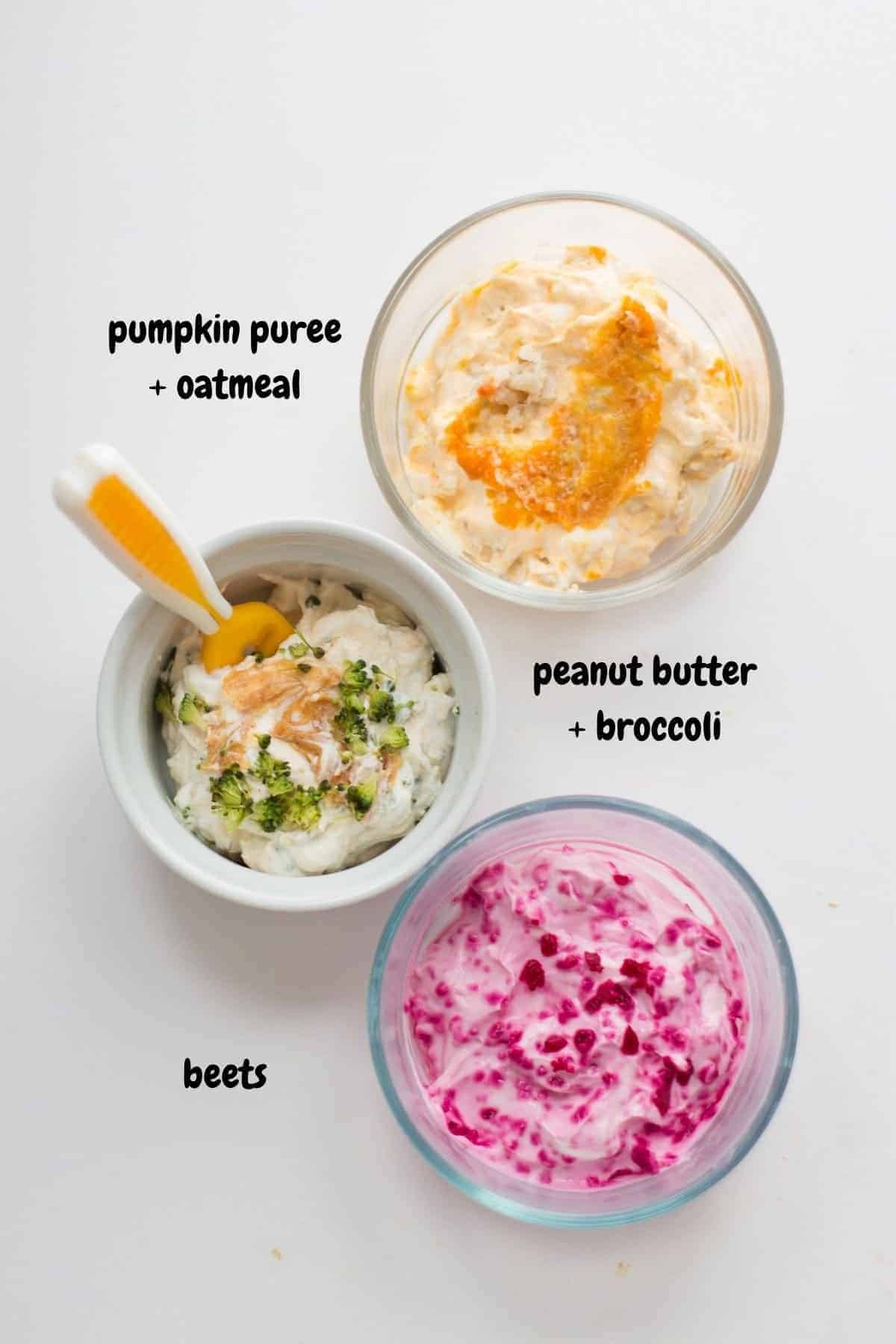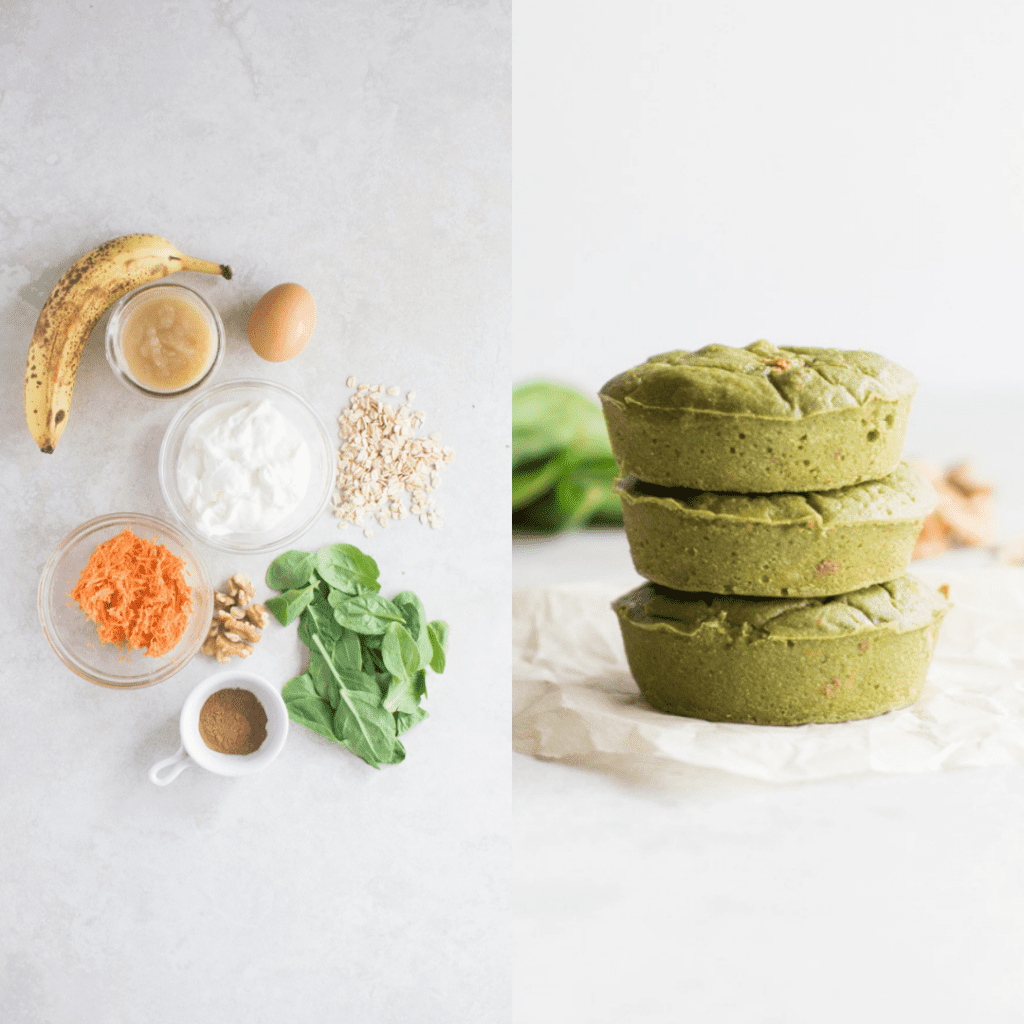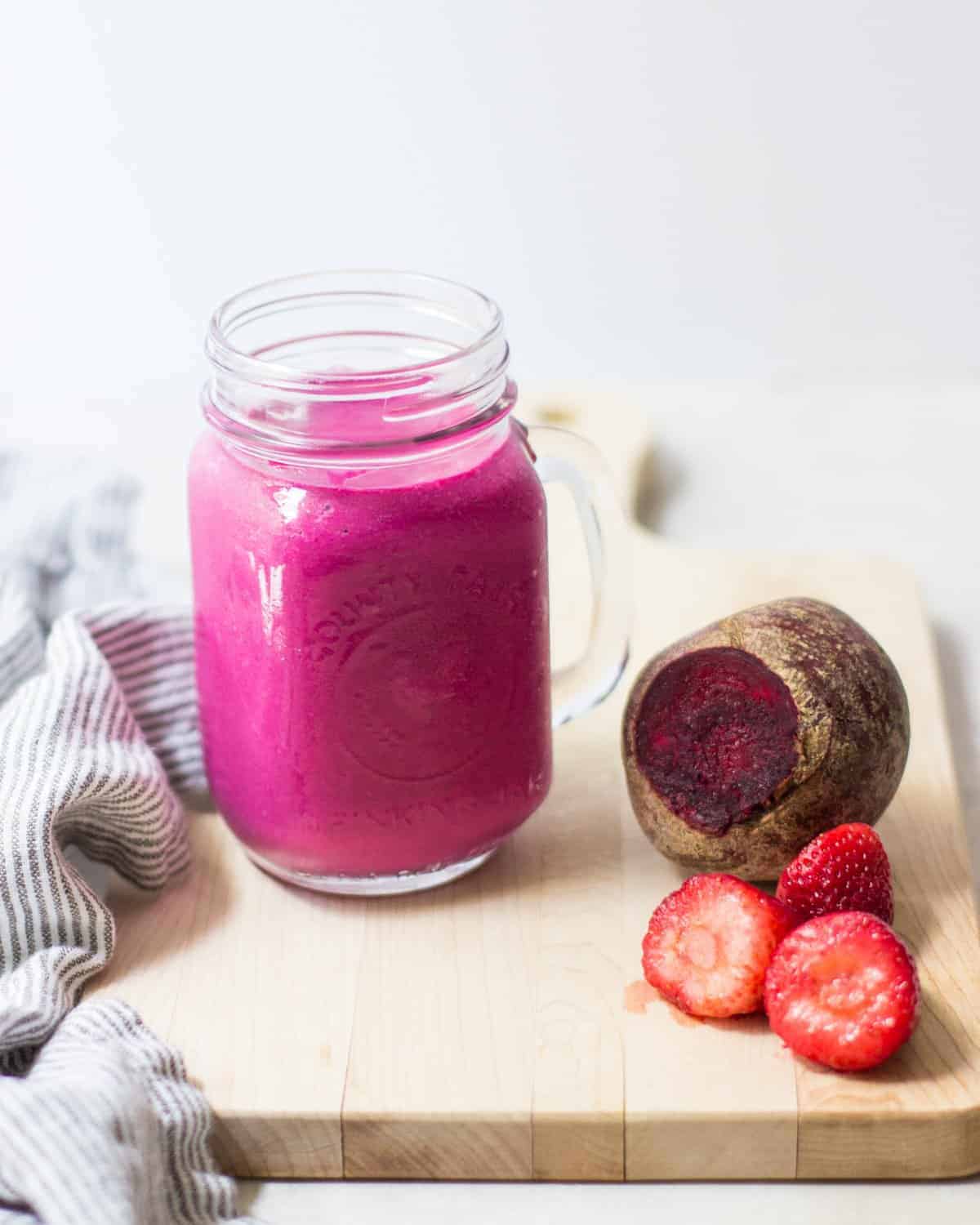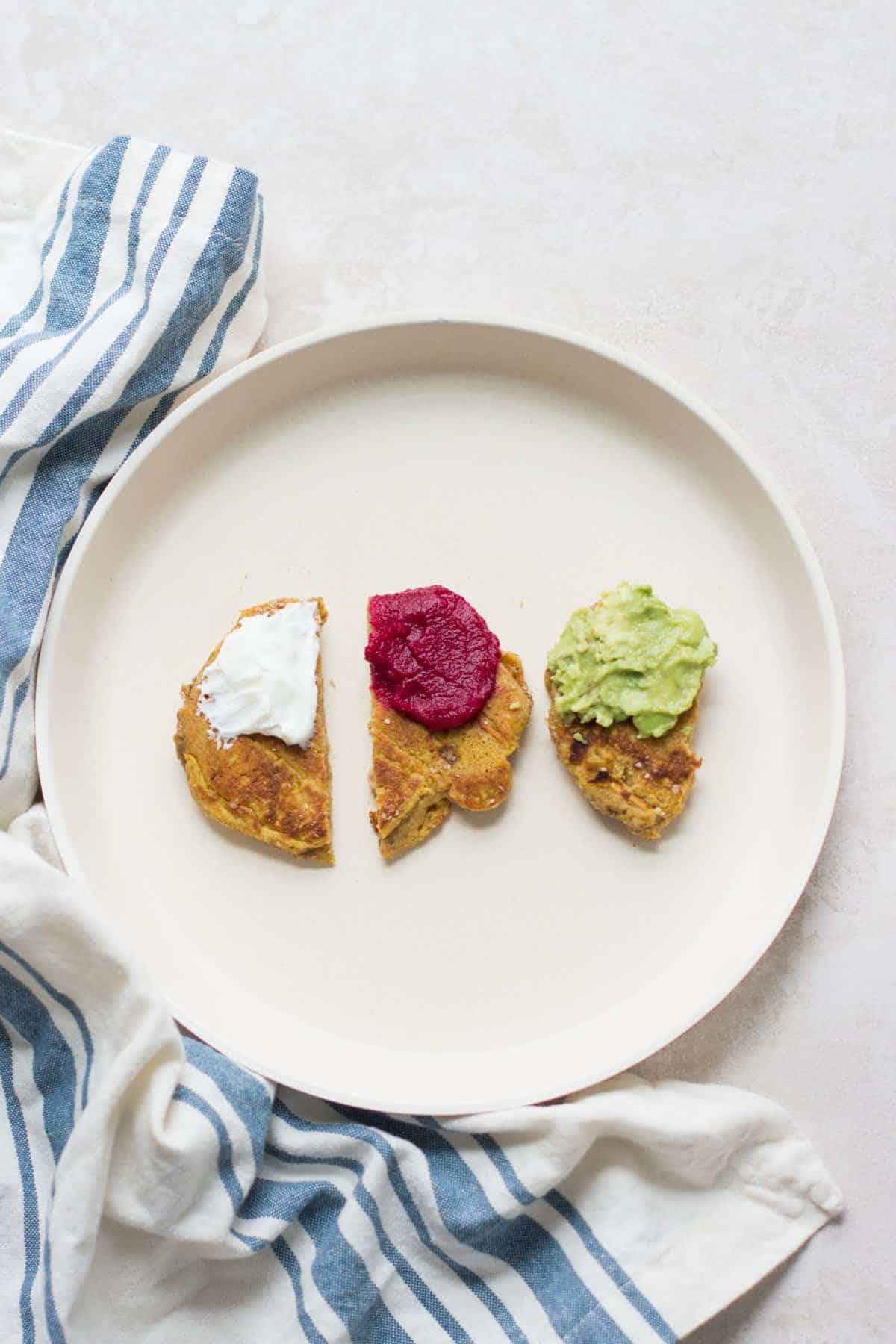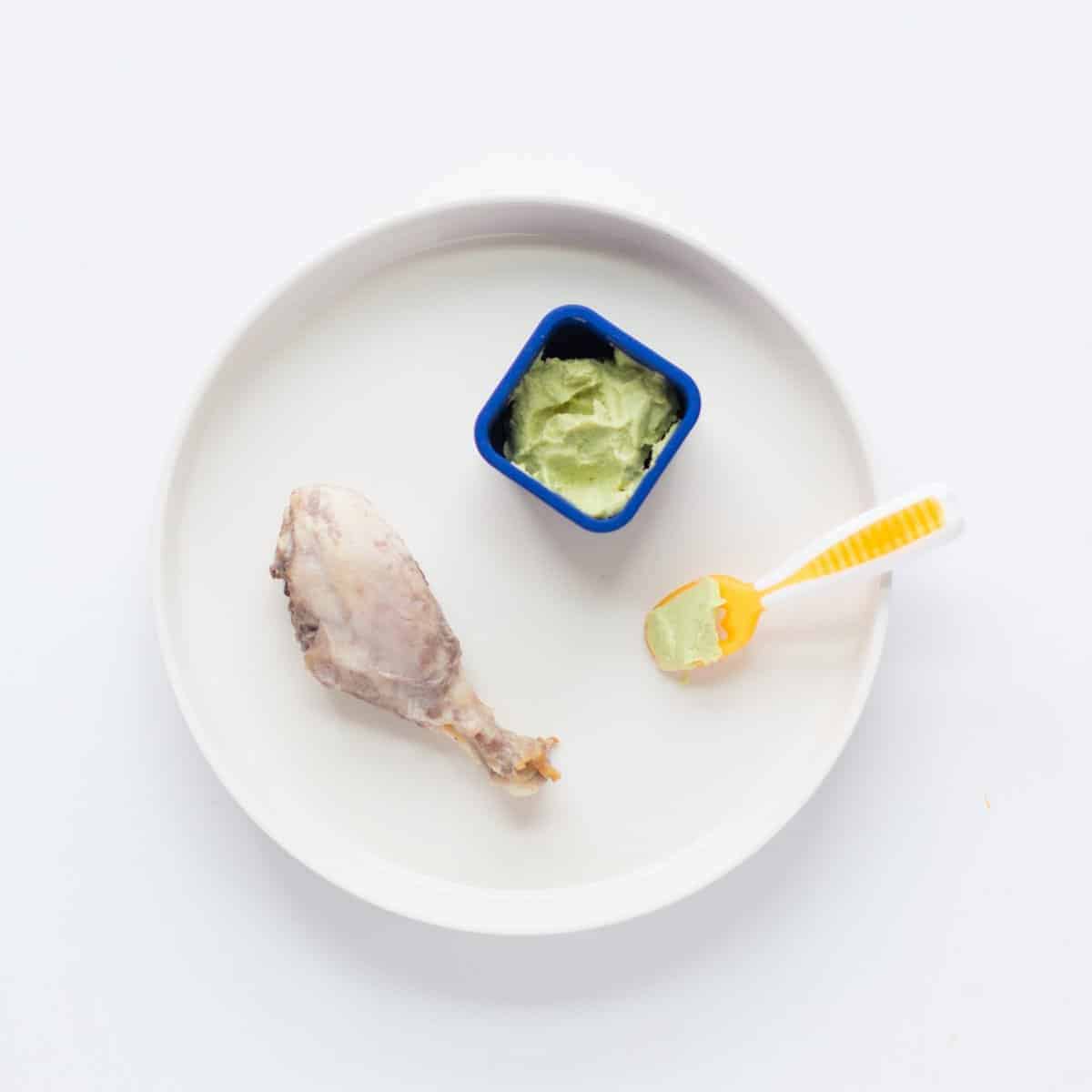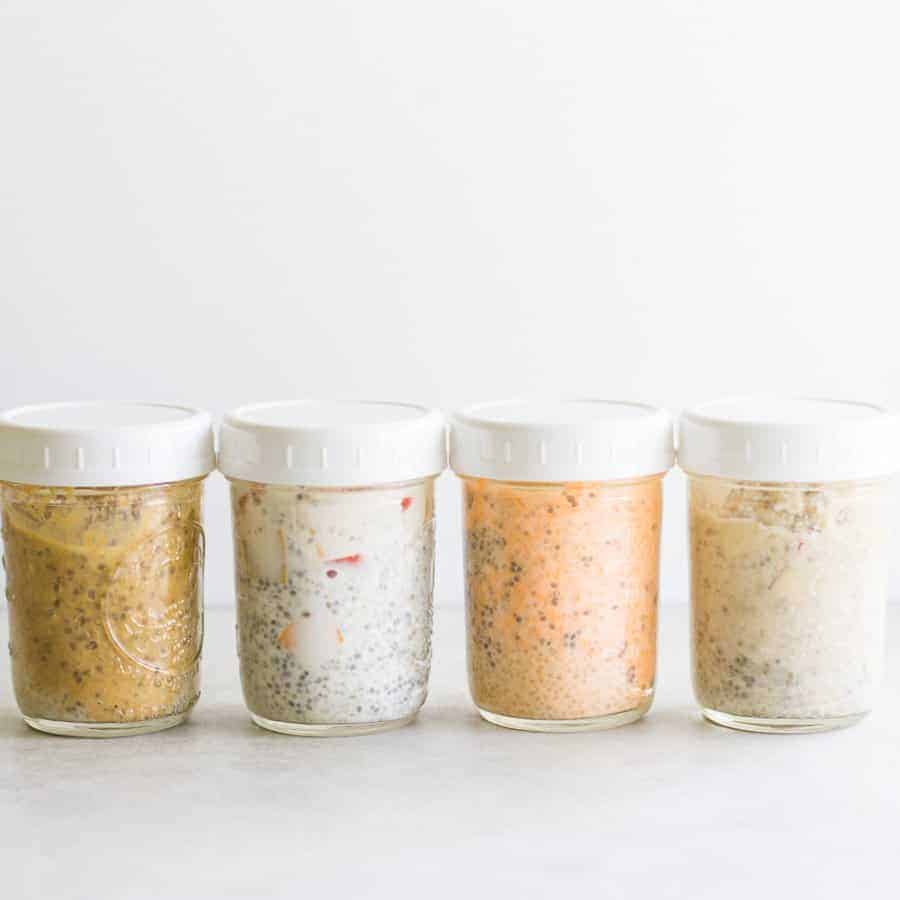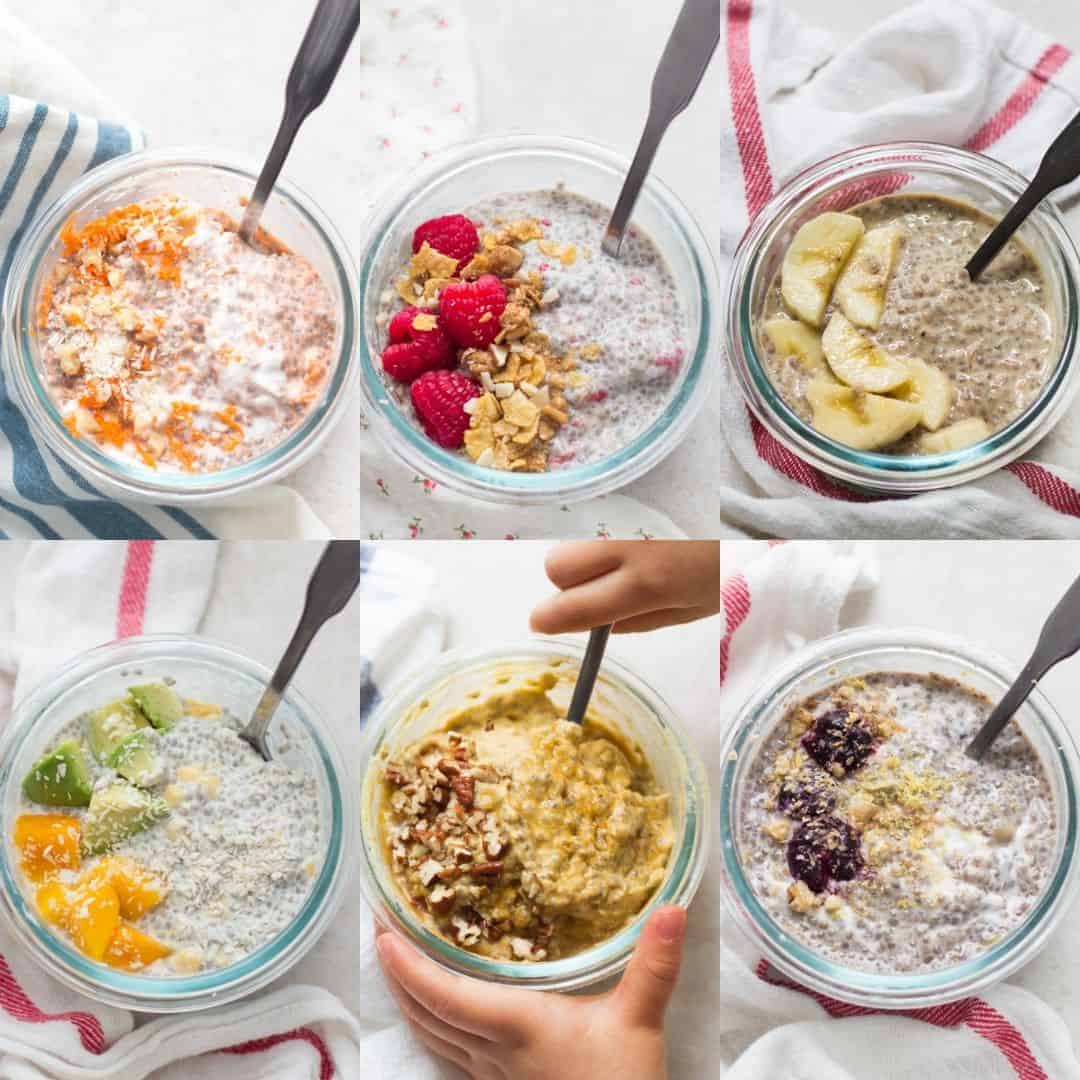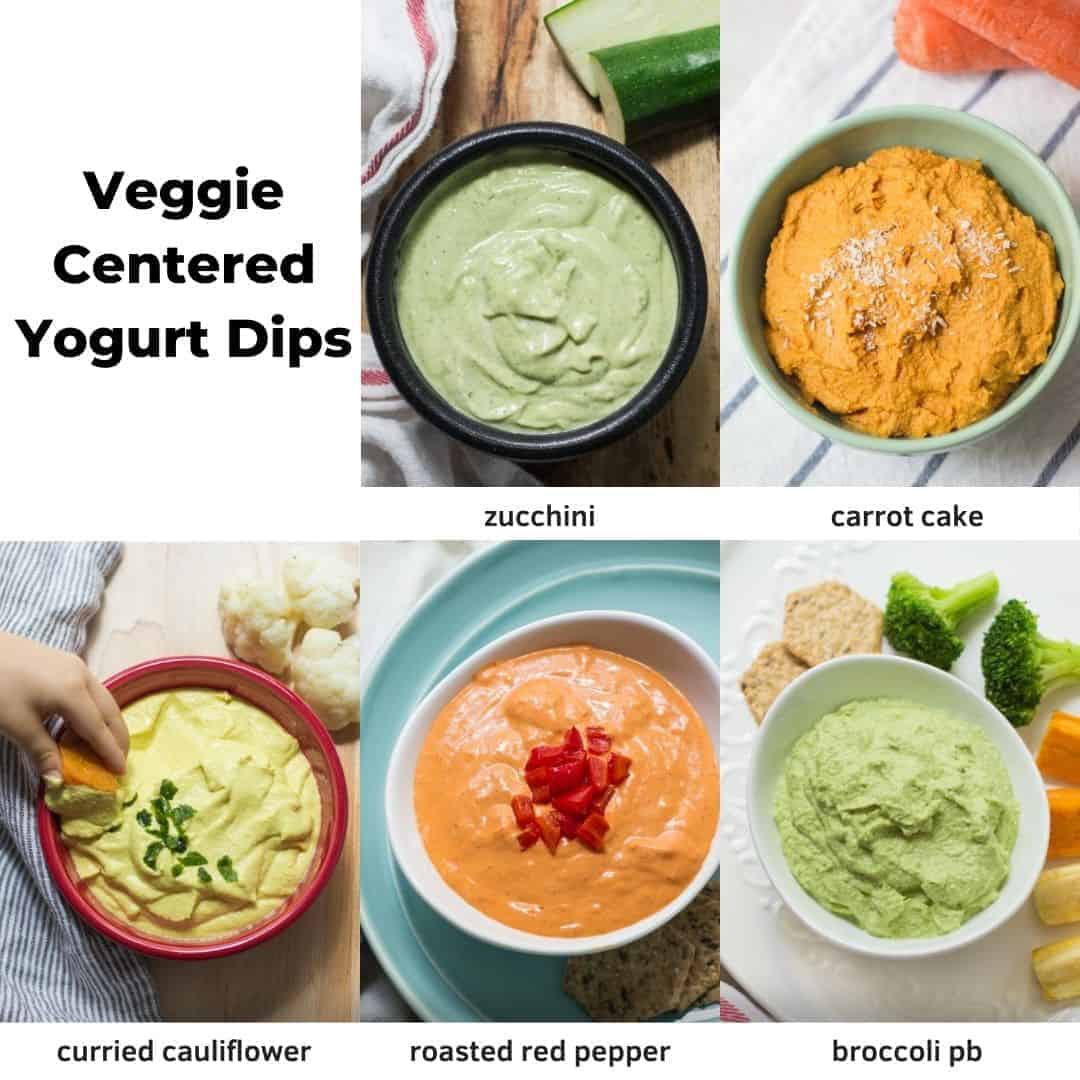When Can Babies Have Yogurt?
You can offer yogurt as soon as your baby starts solids, usually around 6 months. Be sure to pay close attention to the developmental signs of readiness, not just age. If unsure, be sure to grab my FREE handout by signing up below! The texture of yogurt is great for babies regardless of which feeding method you chose – baby led weaning or purees. What I especially love is its versatility. Yogurt can be enjoyed with both savory and sweet toppings or added as an ingredient to so many dishes to boost nutrition and flavor! Keep in mind dairy is one of the top potential allergens so start with a small amount and closely watch how your baby reacts. There’s no benefit to delaying the introduction. Contrarily, the current recommendation is to introduce potentially allergenic foods early and often. These include peanut butter, nuts, and eggs.
Health Benefits
Yogurt is a great source of protein, calcium, and healthy fat, which is so essential during this stage of rapid brain development. In fact, babies should get about half of their calories from fat, according to the American Academy of Pediatrics. Fat continues to be important for toddlers so continue opting for full-fat. Yogurt is also an easy way to incorporate probiotics into your baby and toddler’s diet, which is important for digestive health and strengthening the immune system. Not to mention, the active live cultures in yogurt help break down the lactose and protein making it easier for your baby’s tummies to digest compared to other dairy products.
What Is The Best Yogurt For Babies?
With SO many brands, styles, and flavors to choose from, picking the most nutritious and appropriate yogurt for your baby can be confusing. But it’s quite simple. Look for plain, pasteurized, whole fat yogurt with “live and active cultures.”
Baby yogurt vs. Regular yogurt
There’s no need to purchase baby yogurts. It’s just a marketing scheme to get you to spend more money. Many baby yogurts also contain fruits as well as added sugars. When in doubt, look at the ingredient list. Again, stick to plain yogurt. Your baby may not take to it at first but keep offering! Take advantage of this window of opportunity when babies are most willing to try and accept new flavors. If possible, the recommendation is to avoid added sugar until 2 years of age. Note that yogurt and all dairy products contain naturally occurring sugars (lactose), which you don’t need to worry about.
Best Baby Yogurts
The only real advantage I see with baby yogurts is that they come in 4 ounce container or pouch. Here are my top recommendations:
Stonyfield Organic YoBaby Whole Milk PLAIN Yogurt – this is my favorite! The ingredient list is simple – yogurt and vitamin D. Happy Tot Baby Organic banana blueberry yogurt and oats – this one contains fruits, oats, and chia seeds and has 0 grams of added sugars. They have other flavors too. Chobani whole milk plain yogurt Wallaby whole milk yogurt Fage whole milk yogurt
Regular vs. Greek yogurt
They are both fermented dairy products made with the same ingredients – fresh milk plus starter cultures (live bacteria). In both, bacterial cultures help break down lactose, so they’re an easier dairy food to digest for those who are lactose intolerant. The differences lie in the fact that Greek yogurt is made by straining the whey (milk protein). Whey contains most of the sodium and calcium so that’s why Greek yogurt contains less than the plain. Greek yogurt is also easier to digest bc it contains less whey and lactose. It’s also thicker making it easier for babies to scoop w/ their hands. It will also stick to the spoon better. So which one’s better? Both are great! Mix it up and enjoy both! Again, variety is the name of the game. One of the most common questions I receive is:Greek yogurt has more protein. Doesn’t that make it better? Many moms are concerned about their child’s protein intake. Rest assured, breastmilk/formula will provide adequate amounts of protein during the first year. There’s no need to supplement or focus on offering protein-rich foods. Here are the nutrients you do want to prioritize when starting solids!
Organic vs. Conventional Yogurt
Organic dairy products are free of any growth hormones, antibiotics, and GMOs. If it’s in your budget, I recommend opting for organic whenever possible. But please don’t feel bad if you aren’t able to.
Best Dairy-Free Yogurt for Babies
Be sure to look at the ingredient list! Oftentimes these yogurts contain lots of ingredients. Shorter the better. Choose ones that are fortified with calcium and vitamin D, don’t contain added sugars, and have some protein and fat. Here are some specific brands you may consider:
Kite Hill unsweetneed Forager Cahewgurt plain unsweetened Lavva Original So Delicious unsweetened coconut yogurt
Yogurt Recipes for Babies
Here are some easy, fun ways to incorporate yogurt into your baby’s meals! Again, note that dairy is one of the top allergens so if it’s your first time introducing, make sure you don’t serve it with another allergen. That way, if your child has a reaction, you’ll know which food is responsible. You can, however, serve it alongside non-allergen foods (e.g., yogurt + fruit). There’s no need to introduce one food at a time. It’s beneficial to serve a variety of foods together so your baby can get used to all the different flavors and textures. More on this – best first foods for babies
Yogurt Bowl
SO easy to whip up, versatile, and delicious, it’s my go-to breakfast or snack for my kids AND me! There’s really no “wrong” way to make it. Topping suggestions:
Fruits – sweeten yogurt without added sugars. You can finely chop, grate, mash, or puree Mangoes, apples, strawberries, pears Vegetables – add whatever vegetables you have on hand along with herbs and spices Nuts and seeds Pureed/mashed beans Oatmeal, lentils, quinoa
I’ve included 3 different variations (pictured) with specific measurements to help get you started, but truly there’s no need to measure precisely. If you’re doing baby led weaning, yogurt mess is unreal! But if your baby is anything like mine, they’re going to have so much fun exploring and learning to self-feed. Let them use their hands and/or preload onto a spoon. I absolutely LOVE using the these baby spoons!
Yogurt Muffins
Yogurt lends itself really well to baked goods, and not only does it boost the nutrition but it makes them moist and flavorful! Here are my baby and toddler friendly muffins all in one place!
In Smoothies
Adds a lovely depth and creaminess (pictured: beet smoothie from my “Veggie Centered Delights” ecookbook How to Cook and Serve Beets to Babies
Pancakes with Yogurt
Give these recipes try!
Yogurt Marinade
Marinate meat in it! The active bacteria in yogurt helps break down the meat making it tender! (try this Southwestern Yogurt Baked Chicken)
Overnight Oats or Quinoa
This is seriously the perfect make-ahead breakfast! I have a feeling this easy and filling meal is going to become one of your go-tos.
Chia Pudding
Another delicious make-ahead breakfast! Perhaps I am hinting that you deserve to sleep in a bit more ;).
Yogurt Dips
If you are struggling to get your child to eat their vegetables, meat, etc., try serving alongside dips and sauces! They add flavor, fun, and novelty. The ones you see in the collage are all from my “Veggie-Centered Delights” ecookbook. You’ll find a formula that includes serving sizes/quantities for individual components to make ANY yogurt dip. All the examples you see above are made using this SAME formula. There’s at least 1 cup of veggies in each one! And here are all the ways you can serve dips!
